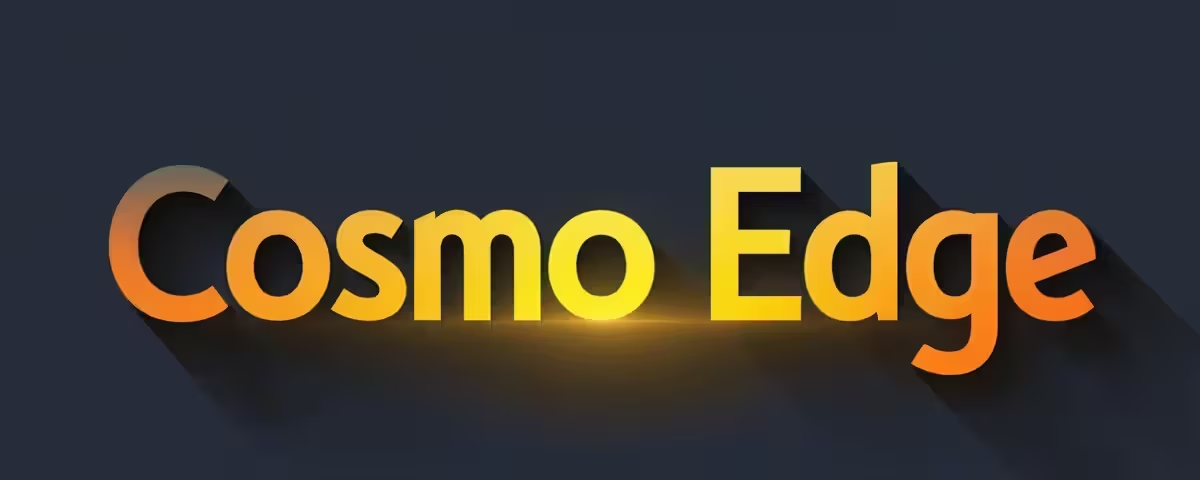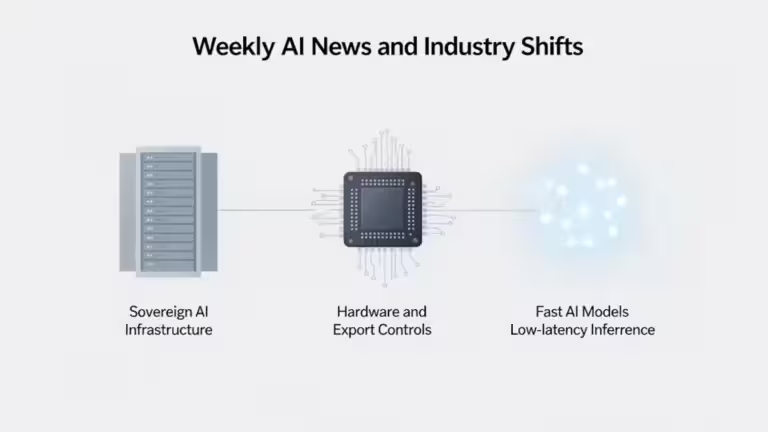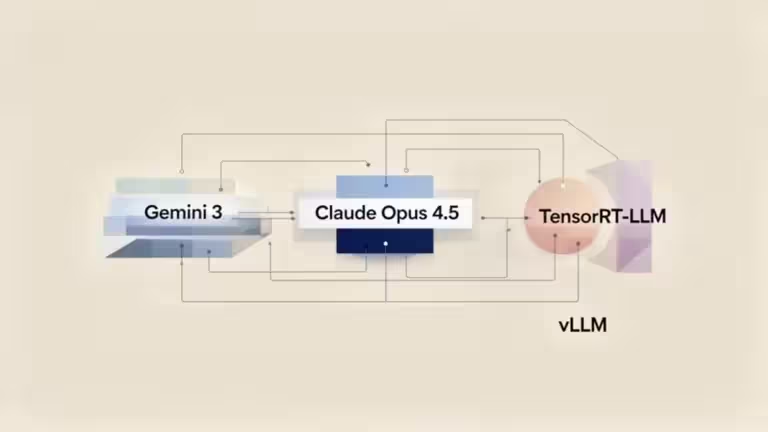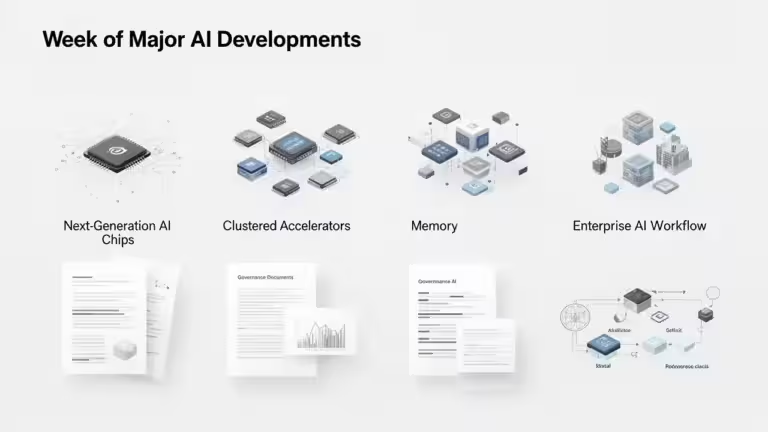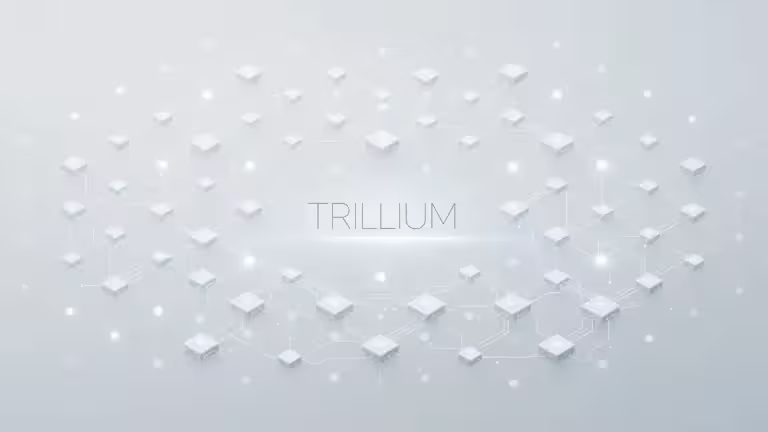Best open source AI (LLM) in September 2025

Open source artificial intelligence is emerging in 2025 as a credible alternative to proprietary giants such as ChatGPT, Gemini, and Claude. More transparent, more flexible, and often more cost effective, it appeals to developers, researchers, and businesses that want control of data and costs. As paid AI APIs spread through every workflow and can quickly inflate bills, open source LLMs provide a practical answer.
In this guide, we present the best open source AI in September 2025, using data from the independent platform artificialanalysis.ai. Generation speed, answer quality, reasoning ability, and context window size are the key criteria that let us compare each model objectively.
Results may surprise you, some open source LLMs now rival top proprietary models.
Why choose an open source AI (LLM) in 2025
In 2025, open source AI is no longer confined to labs, open source LLMs power real use cases like personal assistants, data analysis, content generation, and customer support. Their success rests on three major advantages:
- Data privacy: running locally keeps full control over sensitive data, unlike proprietary services such as ChatGPT or Gemini.
- Cost control: with tools like n8n, repeated calls to paid APIs can explode quickly, while many workflows or prototyping phases do not require a top tier model.
- Transparency and independence: you can inspect, adapt, and deploy models freely, without relying on a closed, costly ecosystem.
In short, open source AI wins because it combines privacy, savings, and autonomy. To protect data or to build robust solutions, it is a more accessible and often more effective alternative in 2025.
How the best open source AI models are evaluated
Comparing the best open source AI in 2025 is not trivial. Models evolve fast, versions multiply, and each vendor highlights different strengths. The independent platform artificialanalysis.ai provides a reference methodology to evaluate both open source LLMs and proprietary models on equal footing. The method is not perfect, but it is a solid indicator to refine by use case.
A global index, the Artificial Analysis Intelligence Index
At the core of the ranking is the Artificial Analysis Intelligence Index, a composite score that measures the overall capability of a model. It aggregates performance across demanding benchmarks that cover reasoning, mathematics, science, programming, and text understanding, aiming to avoid judging a model on a narrow skill and to provide a holistic view of intelligence.
Key criteria
To rank the best open source AI, several dimensions are evaluated:
- Quality and intelligence, via benchmarks like MMLU, AIME, or LiveCodeBench that measure accuracy and reasoning logic.
- Speed, measured in tokens per second, a key criterion for smooth UX.
- Latency, time to first token, crucial for interactive experiences.
- Context window, how much text and instruction a model can process, from 16k to over 1M tokens today.
- Cost, price per million tokens. For open source models this is secondary, since they often run on local or dedicated infrastructure.
Weighting tailored to open source LLMs
For small open source models, priority goes to speed and light footprint, since they target local execution. For medium and large models, inference cost matters less than intelligence and stability, since they are aimed at professional servers.
This approach enables fair comparisons across free, open source, and proprietary models such as GPT-5 and Claude 4, clarifying strengths and weaknesses of each open source LLM and surfacing leaders in open source artificial intelligence in 2025.
Best small open source AI (LLM) in 2025
Small open source AI models are rising fast. They offer a sweet spot between lightness, speed, and reasoning ability. Their main advantage is local deployment on a consumer GPU PC or modest servers. These lightweight open source LLMs are ideal for developers who want to experiment without cloud lock in and for companies that want to keep data in house.
| Model | Creator | Context Window | Artificial Analysis Intelligence Index | Median Tokens/s | Median First Token (s) |
|---|---|---|---|---|---|
| Qwen3 30B 2507 | Alibaba | 262k | 46 | 99.7 | 0.98 |
| gpt-oss-20B (high) | OpenAI | 131k | 45 | 253.6 | 0.43 |
| Qwen3 4B 2507 | Alibaba | 262k | 43 | 0.0 | 0.00 |
| EXAONE 4.0 32B | LG AI Research | 131k | 43 | 58.7 | 0.33 |
| NVIDIA Nemotron Nano 9B V2 | NVIDIA | 131k | 38 | 0.0 | 0.00 |
| QwQ-32B | Alibaba | 131k | 38 | 37.8 | 0.54 |
| Qwen3 30B 2507 | Alibaba | 262k | 37 | 85.2 | 1.02 |
| NVIDIA Nemotron Nano 9B V2 | NVIDIA | 131k | 37 | 0.0 | 0.00 |
| DeepSeek R1 0528 Qwen3 8B | DeepSeek | 33k | 35 | 56.7 | 0.69 |
| EXAONE 4.0 32B | LG AI Research | 131k | 33 | 56.8 | 0.33 |
| Qwen3 Coder 30B | Alibaba | 262k | 33 | 92.1 | 1.46 |
| Reka Flash 3 | Reka AI | 128k | 33 | 50.9 | 1.32 |
| Magistral Small | Mistral | 40k | 32 | 175.9 | 0.35 |
| Mistral Small 3.2 | Mistral | 128k | 29 | 122.2 | 0.31 |
| Llama 3.1 Nemotron Nano 4B v1.1 | NVIDIA | 128k | 26 | 0.0 | 0.00 |
| Phi-4 | Microsoft Azure | 16k | 25 | 31.8 | 0.45 |
| Gemma 3 27B | 128k | 22 | 47.5 | 0.65 | |
| Gemma 3 12B | 128k | 21 | 0.0 | 0.00 | |
| Devstral Small | Mistral | 256k | 18 | 146.9 | 0.33 |
| Gemma 3n E4B | 32k | 16 | 68.7 | 0.34 |
Qwen3 30B and Qwen3 4B, versatility and speed
Among the best open source AI in this class, Qwen3 30B and Qwen3 4B stand out. Built by Alibaba, they feature a large context window up to 262k tokens for long documents and complex prompts. The intelligence index reaches 46 for the 30B version, making it one of the leading open source LLMs in its range.
Run locally, they offer flexibility and responsive performance across tasks like text generation, translation, and rapid AI prototyping.
gpt-oss-20B, speed first
gpt-oss-20B, released under an open source license, is prized for its generation speed. At over 250 tokens per second, it is among the fastest open source LLMs in its category, a strong fit for real time chatbots and embedded assistants. Its overall score, Index 45, confirms it does not sacrifice quality for speed.
Note, it is available here in GGUF format with Unsloth dynamic quantization V2, an optimization that delivers a sub 12 GB file with minimal accuracy loss.
Magistral Small (Mistral), light and efficient
French startup Mistral offers Magistral Small, a model noted for lightweight footprint and speed around 176 tokens per second, ideal for less powerful machines. With an Index of 32 it trails Qwen3 and gpt-oss, yet remains a dependable open source language model for simple tasks and fast prototypes.
Nvidia Nemotron Nano, potential still pending
Nvidia also provides Nemotron Nano 9B V2. In practice, Nemotron Nano can be deployed via Nvidia NIM microservices, directly with the NeMo framework and Docker containers, or with solutions like vLLM or Hugging Face Transformers. It is attractive for Nvidia centric stacks, although comparable public data remains limited for now.
In summary, small open source AI models stand out for speed and local adaptability. Qwen3 largely leads this class, followed by gpt-oss-20B, while Mistral and Nvidia round out the field with more specialized options.
Best medium open source AI
Medium sized open source AI models balance power and accessibility. Heavier than small models, they deliver stronger reasoning and accuracy. In 2025 these open source LLMs target professional or academic use, often requiring pro GPUs or dual GPUs, for example two RTX 5090, with VRAM capacity as the key constraint.
Inference cost is not a decisive factor here, the focus is on answer quality and stable throughput.
| Model | Creator | Context Window | Artificial Analysis Intelligence Index | Median Tokens/s | Median First Token (s) |
|---|---|---|---|---|---|
| gpt-oss-120B (high) | OpenAI | 131k | 58 | 247.6 | 0.49 |
| Qwen3 Next 80B A3B | Alibaba | 262k | 54 | 69.3 | 1.02 |
| GLM-4.5-Air | Z AI | 128k | 49 | 97.4 | 1.04 |
| Llama Nemotron Super 49B v1.5 | NVIDIA | 128k | 45 | 0.0 | 0.00 |
| Qwen3 Next 80B A3B | Alibaba | 262k | 45 | 61.1 | 1.09 |
| Hermes 4 – Llama-3.1 70B | Nous Research | 128k | 39 | 86.3 | 0.59 |
| GLM-4.5V | Z AI | 64k | 37 | 60.5 | 0.96 |
| Llama 3.3 Nemotron Super 49B | NVIDIA | 128k | 35 | 0.0 | 0.00 |
| Llama 4 Scout | Meta | 10m | 28 | 112.0 | 0.38 |
| Command A | Cohere | 256k | 28 | 97.3 | 0.16 |
| Llama 3.3 70B | Meta | 128k | 28 | 71.1 | 0.43 |
| Llama Nemotron Super 49B v1.5 | NVIDIA | 128k | 27 | 0.0 | 0.00 |
| GLM-4.5V | Z AI | 64k | 26 | 57.4 | 1.18 |
| Llama 3.3 Nemotron Super 49B v1 | NVIDIA | 128k | 26 | 0.0 | 0.00 |
| Hermes 4 70B | Nous Research | 128k | 24 | 80.0 | 0.57 |
| Llama 3.1 Nemotron 70B | NVIDIA | 128k | 24 | 31.7 | 0.61 |
| Llama 3.2 90B (Vision) | Meta | 128k | 19 | 37.6 | 0.34 |
| Jamba 1.7 Mini | AI21 Labs | 258k | 4 | 139.3 | 0.64 |
gpt-oss-120B, raw power and reliability
With an Artificial Analysis Intelligence Index of 58, gpt-oss-120B stands as one of the best open source LLMs in its class. Its speed exceeds 240 tokens per second, on par with many proprietary models for fluid interaction. For developers and enterprises it is a serious alternative to closed models like GPT-4 or Claude, a reference choice for a powerful, versatile open source AI.
Qwen3 Next 80B, balance of power and context
Alibaba’s Qwen3 line leads with Qwen3 Next 80B. Its vast 262k token context fits long document analysis, complex code generation, and rich instruction following. With a score of 54 it sits just behind gpt-oss-120B, while offering superior context handling, an excellent choice for data heavy enterprise workloads.
In short, medium size open source LLMs bridge fast small models and ultra large systems. gpt-oss-120B dominates on raw speed and power, Qwen3 Next 80B shines on context capacity, and GLM-4.5-Air provides a solid performance to accessibility trade off.
Best large open source AI (LLM) in 2025
Large open source AI models represent the cutting edge of community driven R&D. They approach the level of proprietary models like GPT-5, Claude 4, or Gemini 2.5, while retaining transparency and flexible integration. These large open source LLMs target professional environments, requiring substantial compute.
| Model | Creator | Context Window | Artificial Analysis Intelligence Index | Median tokens/s | Median first token (s) |
|---|---|---|---|---|---|
| Qwen3 235B 2507 | Alibaba | 256k | 57 | 49.9 | 1.19 |
| DeepSeek V3.1 | DeepSeek | 128k | 54 | 20.6 | 3.06 |
| DeepSeek R1 0528 | DeepSeek | 128k | 52 | 20.5 | 2.97 |
| Kimi K2 0905 | Moonshot AI | 256k | 50 | 64.7 | 0.61 |
| GLM-4.5 | Z AI | 128k | 49 | 50.6 | 0.75 |
| Kimi K2 | Moonshot AI | 128k | 48 | 52.9 | 0.56 |
| MiniMax M1 80k | MiniMax | 1m | 46 | 0.0 | 0.00 |
| Qwen3 235B 2507 | Alibaba | 256k | 45 | 35.2 | 1.10 |
| DeepSeek V3.1 | DeepSeek | 128k | 45 | 20.0 | 2.96 |
| Qwen3 Coder 480B | Alibaba | 262k | 42 | 43.1 | 1.49 |
| MiniMax M1 40k | MiniMax | 1m | 42 | 0.0 | 0.00 |
| Hermes 4 405B | Nous Research | 128k | 42 | 36.8 | 0.73 |
| Llama Nemotron Ultra | NVIDIA | 128k | 38 | 37.5 | 0.66 |
| Llama 4 Maverick | Meta | 1m | 36 | 136.1 | 0.32 |
| Hermes 4 405B | Nous Research | 128k | 33 | 34.1 | 0.69 |
| MiniMax-Text-01 | MiniMax | 4m | 26 | 0.0 | 0.00 |
| Llama 3.1 405B | Meta | 128k | 26 | 31.0 | 0.68 |
| Jamba 1.7 Large | AI21 Labs | 256k | 21 | 44.1 | 0.78 |
| R1 1776 | Perplexity | 128k | 19 | 0.0 | 0.00 |
Qwen3 235B, the open source champion
As of September 2025, Alibaba’s Qwen3 235B is the clear leader among open source LLMs. With an Artificial Analysis Intelligence Index of 57 it competes directly with Claude 4 Sonnet and approaches several proprietary models. Its 256k token context window fits massive document analysis, scientific research, and complex enterprise applications, a reference pick for the best open source AI in overall power.
DeepSeek V3.1 and DeepSeek R1, precise and practical
DeepSeek models have surged thanks to a strong performance to accuracy ratio. DeepSeek V3.1 and DeepSeek R1 score 54 and 52 respectively. They are slower, about 20 tokens per second, but excel in reasoning for math and programming. For enterprises and labs with solid GPU infrastructure, they are a credible open source alternative to ChatGPT. Their access cost in cloud or on private servers can be competitive, although cost is secondary at this tier.
In short, large open source LLMs now rival top proprietary AI. Qwen3 235B leads, DeepSeek follows closely, Kimi K2 and GLM-4.5 provide faster or more balanced options. For teams ready to invest in infrastructure, these models represent the future of open source artificial intelligence.
Comparison with top proprietary AI
As of September 2025, proprietary LLMs still lead, GPT-5 remains first, Index >66, followed by Grok 4, Claude 4.1 Opus, and Gemini 2.5 Pro. Their edge comes from better optimization and mature ecosystems.
The gap is narrowing. Open source models like Qwen3 235B, Index 57, and DeepSeek V3.1, Index 54, already match reasoning and coding tasks in many cases. Differences are mainly integration and ease of use.
For companies, the question is not whether open source can compete, but where to adopt it, closed solutions provide simplicity and turnkey APIs, open source models deliver freedom, transparency, and independence.
In 2025, open source alternatives to ChatGPT are not only credible, they are a strategic choice.
Trends and outlook for open source LLMs in 2025
2025 is a turning point for open source artificial intelligence. While proprietary models retain a small lead, open source LLMs are progressing rapidly. Several trends suggest a future where open solutions become standard in some domains.
The first trend is the rise of Qwen and DeepSeek, consistently at the top of global rankings, showing open source can match closed leaders while staying more flexible for developers and businesses.
The second trend is hardware optimization. More models target consumer GPUs and new NPUs in Copilot+ PCs, enabling local use where open source AI runs efficiently without costly servers.
Finally, open source is trending toward greater specialization, with models tuned for code, scientific research, or multilingual dialogue. This diversification lets teams select an open source AI tailored to precise needs.
Overall, the outlook for open source LLMs is strong, faster, more specialized, and more accessible, they are becoming a real alternative to proprietary giants. For many teams, 2025 could be the year open source becomes the preferred path for generative AI.
Conclusion, what are the best open source AI models in September 2025

In September 2025, the best open source AI options are no longer secondary alternatives, they are solid and competitive solutions. Benchmarks show Qwen3 235B clearly in front, followed by DeepSeek V3.1 and DeepSeek R1 as excellent trade offs of intelligence and accessibility. Among smaller models, gpt-oss-20B and Magistral Small shine for speed and easy local deployment.
Open source artificial intelligence now competes with proprietary leaders. GPT-5 and Claude 4 still lead, the gap is shrinking quickly. For developers, researchers, and enterprises, betting on an open source LLM in 2025 means more freedom, transparency, and independence. The coming years may cement open source as the preferred route to build the future of generative AI.
Tips: do not choose your model based solely on the overall Artificial Intelligence Index. Many models excel in a specific domain, even those outside the top 10. The domains are diverse and each has its own benchmark:
- Programming: HumanEval and SWE-bench
- Writing: EQBench Creative Writing and WritingBench
- Assistant
- Analysis
- And sometimes highly specialized domains.
The ideal approach is to create a custom test suite based on your use cases and evaluate one or several models accordingly.
FAQ, common questions about open source AI (LLM)
What is the best open source AI in 2025
As of September 2025, Alibaba’s Qwen3 235B is widely considered the best open source AI thanks to its high score, Index 57, and 256k token context window. It competes directly with proprietary models like Claude 4 Sonnet.
Which open source alternative to ChatGPT should you choose
The best open source alternatives to ChatGPT include DeepSeek V3.1, DeepSeek R1, and Qwen3 Next 80B. These models balance power, reasoning quality, and adaptability across use cases.
Can you run an open source AI locally for free
Yes, most free open source LLMs can run locally if you have a sufficiently powerful GPU. Models like gpt-oss-20B or Mistral’s Magistral Small are particularly suitable for a personal PC.
What is the fastest open source AI
Among fast open source AI, gpt-oss-20B is one of the top performers at over 250 tokens per second, ideal for interactive applications and real time assistants.
Which open source AI fits enterprise needs
For enterprises, the most suitable choices are Qwen3 235B, DeepSeek V3.1, and Qwen3 Next 80B, they provide the power required for complex applications with the flexibility of private infrastructure deployment.
Are open source AIs as good as proprietary models
Open source LLMs still trail the very best proprietary models like GPT-5 or Claude 4.1 Opus, the gap is closing fast, and in specific tasks, coding and long context processing, open source already matches closed models.
Your comments enrich our articles, so don’t hesitate to share your thoughts! Sharing on social media helps us a lot. Thank you for your support!
